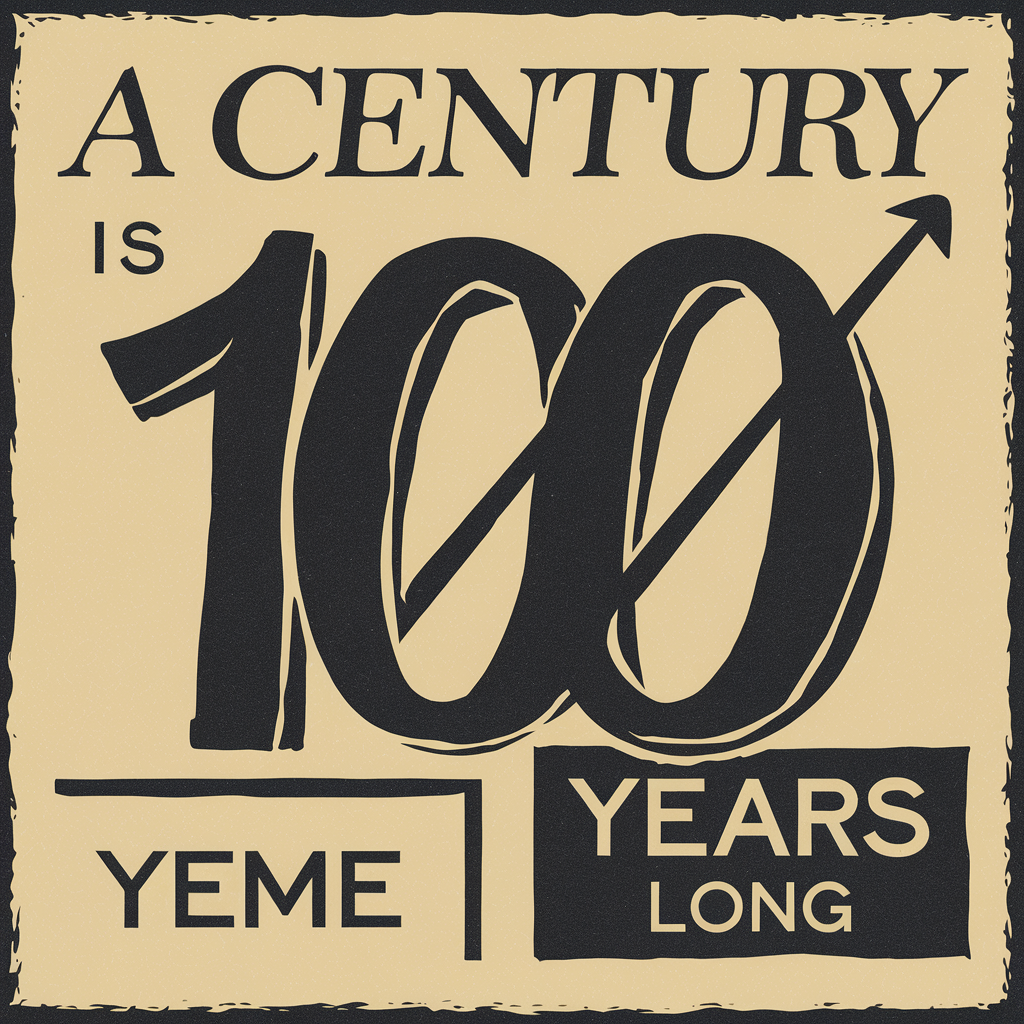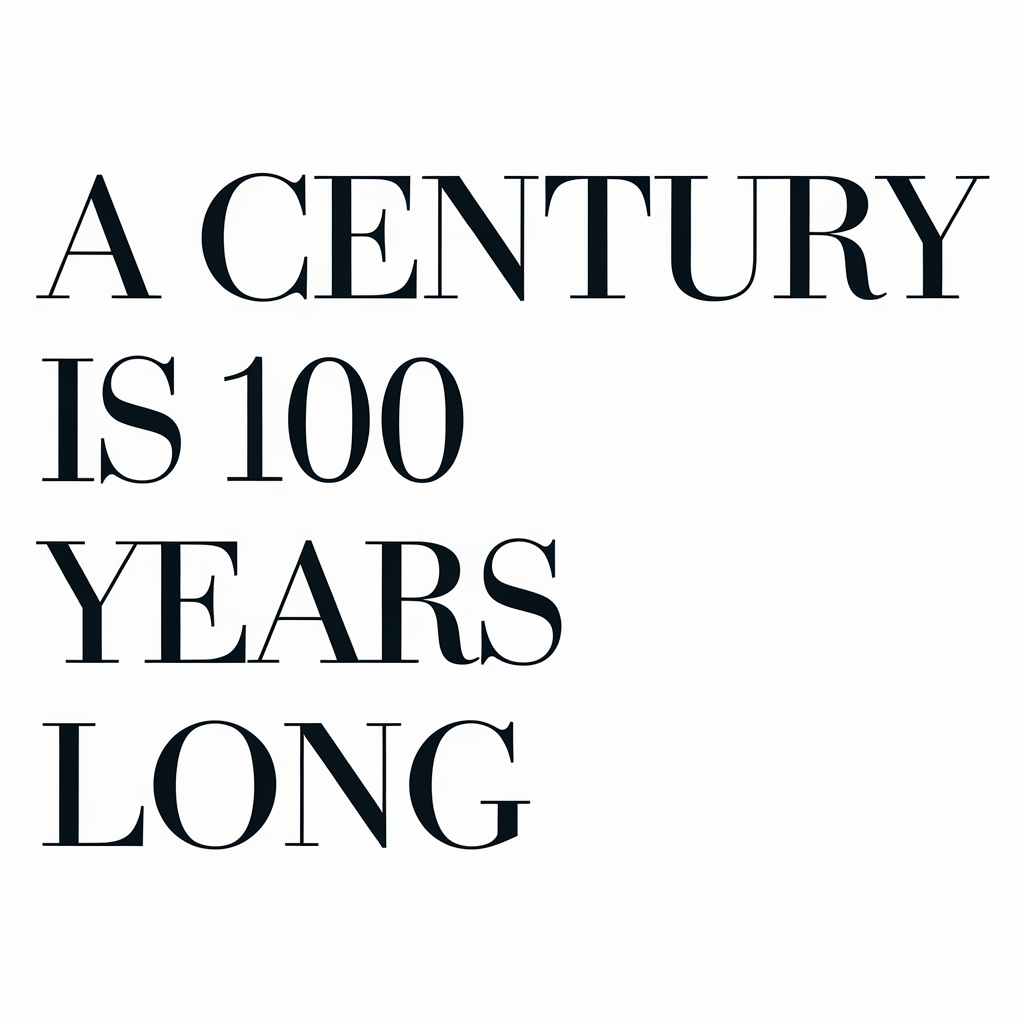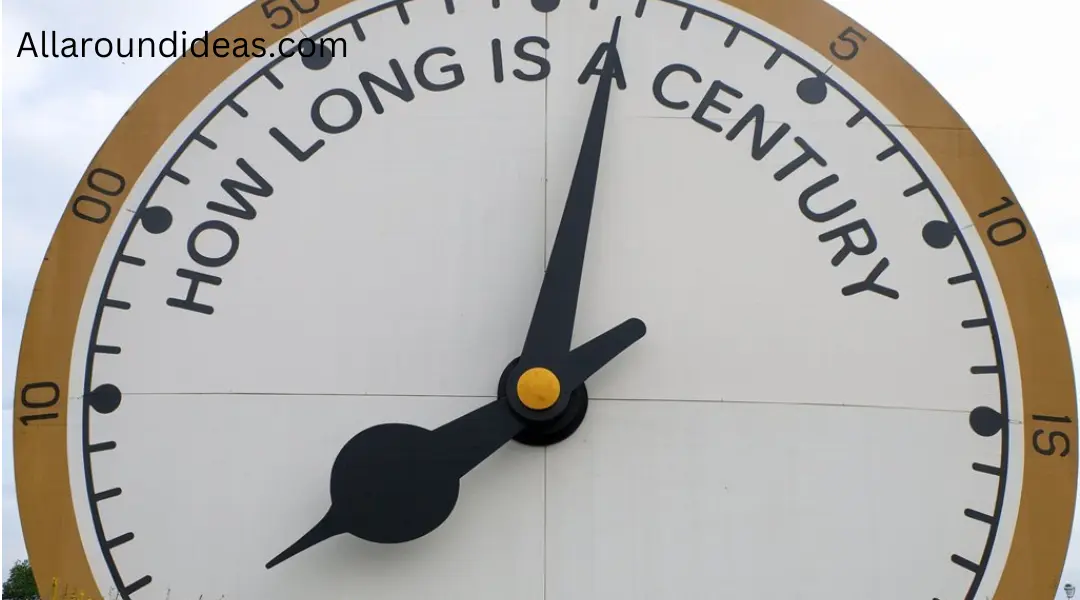Introduction
A century is a significant unit of time that represents one hundred years. It plays a crucial role in history, culture, and our understanding of the world. In this article, we will explore the concept of a century, its historical significance, how it is measured, and its relevance in various fields, From science to culture.

If you want know that How Many Miles is a 10k then checkout our last blog post.
The Definition of a Century
In its simplest form, a century is defined as a period of 100 years. It is commonly used to categorize historical events, cultural movements, and significant milestones. Centuries are often numbered sequentially, with the first century AD spanning from the year 1 to the year 100, the second century from 101 to 200, and so forth. This system allows for a structured understanding of history and its progression.
The Gregorian Calendar
The most widely used calendar in the world today is the Gregorian calendar, established by Pope Gregory XIII in 1582. The Gregorian calendar divides time into years, months, and days, with a leap year occurring every four years to account for the extra day in February every four years. This system helps in tracking time accurately, making it easier to delineate centuries.
Historical Significance of Centuries
1. Historical Milestones
Centuries serve as convenient markers for significant historical events. For example:
- The 1st Century: This century witnessed the rise of Christianity and the establishment of the Roman Empire.
- The 18th Century: Known for the Enlightenment, this era saw significant developments in philosophy, politics, and science.
- The 20th Century: Marked by two world wars, the Cold War, and significant technological advancements, this century drastically shaped the modern world.
By categorizing events into centuries, historians can better analyze and understand the progression of human civilization.
2. Cultural Context
Centuries also help in categorizing cultural movements. For instance, the Renaissance occurred during the 14th to 17th centuries, marking a profound revival in art, literature, and learning in Europe. Understanding cultural epochs in terms of centuries allows us to contextualize artistic and intellectual developments within a broader historical framework.
If you want know that How Many Miles is a 10k then checkout our last blog post.
3. Generational Impact
Each century can be seen as a reflection of the values, struggles, and achievements of the generations that lived during that time. The concept of a century allows us to appreciate the evolution of societies and the impact of historical events on future generations.
How is a Century Measured?
1. Calendrical Systems
The measurement of a century primarily depends on the calendar system in use. While the Gregorian calendar is the most prevalent, other cultures have their own systems, such as the lunar calendar or the Hebrew calendar. Each system has its methods for measuring years and, consequently, centuries.
2. Leap Years
In the Gregorian calendar, leap years occur to correct the calendar year with the astronomical year. A leap year happens every four years, except for years that are divisible by 100, unless they are also divisible by 400. This means that the year 2000 was a leap year, but 1900 was not. This correction ensures that the calendar remains aligned with the Earth’s orbit around the sun, affecting how we measure centuries.
3. Astronomical Considerations
The length of a century can also be influenced by astronomical factors. The average solar year is about 365.2425 days, which is why we need leap years. Over the course of a century, these extra days can accumulate, affecting our calendar’s accuracy. Astronomers and timekeepers account for these discrepancies when discussing longer time spans.

The Importance of Centuries in Various Fields
1. History and Anthropology
In history and anthropology, centuries are vital for studying human evolution, migration patterns, and cultural development. By examining changes over centuries, researchers can identify trends, understand the impacts of technological advances, and analyze the development of social structures.
2. Science and Technology
The impact of centuries is also felt in the field of science and technology. For instance, the 19th century saw the Industrial Revolution, which transformed economies and societies. In contrast, the 20th century was marked by rapid advancements in technology, medicine, and space exploration. Understanding the progression of scientific discovery across centuries helps in forecasting future developments.
If you want know that How Many Miles is a 10k then checkout our last blog post.
3. Art and Literature
Art and literature have evolved dramatically over the centuries. Each century has its own distinct styles, genres, and influential figures. For instance, the 19th century is known for Romanticism, while the 20th century saw the rise of Modernism. By categorizing artistic movements within centuries, we can better appreciate the shifts in human expression and creativity.
4. Climate Change and Environmental Studies
In environmental studies, centuries are significant for analyzing climate patterns and changes. Researchers examine historical climate data over centuries to understand long-term trends, such as global warming and its impact on ecosystems. This century-long perspective is crucial for addressing contemporary environmental challenges.
Centuries in Popular Culture
Centuries also permeate popular culture, often serving as themes in literature, film, and music. Historical novels and movies frequently set their narratives within specific centuries, allowing audiences to immerse themselves in the socio-political climate of the time.
For instance, the 18th century is often romanticized in literature, with its tales of exploration and revolution. Similarly, the 20th century, marked by significant global upheaval, has inspired countless artistic works reflecting the struggles and triumphs of that time.
Future Centuries: Looking Ahead
As we move further into the 21st century, it is important to consider how future generations will view this period. The challenges we face today, including climate change, technological advancements, and global conflicts, will shape the narrative of the 21st century for years to come.
1. Record Keeping
In an age dominated by digital technology, the methods we use to record history and data will evolve. Future historians may rely on digital archives and data analytics to understand the 21st century.
2. Globalization
The 21st century is characterized by unprecedented globalization. The interconnectedness of cultures and economies may redefine how future generations perceive this century, emphasizing collaboration and shared challenges.

Conclusion
A century, defined as a period of 100 years, serves as a vital unit of measurement in our understanding of history, culture, and progress. It allows us to categorize significant events, cultural movements, and scientific advancements in a structured way.
If you want know that How Many Miles is a 10k then checkout our last blog post.
As we reflect on the past centuries and look forward to the future, the concept of a century remains a valuable framework for analyzing our collective journey as a species. Whether in the context of historical milestones, cultural developments, or scientific discoveries, centuries provide a lens through which we can better understand our world and the legacy we leave for future generations.


